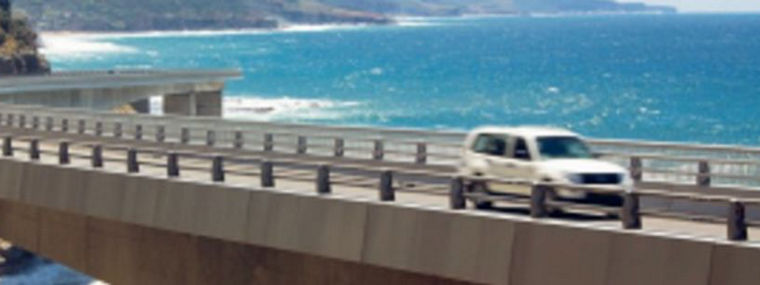Rust Doesn't Stand a Chance
They cross rivers, valleys, roads, and railroad tracks; they are landmarks, tourist attractions, or just a way to get from one place to another. There are around 140,000 bridges in Germany, 40,000 of which are on freeways and federal highways. Many of them are made of steel—and they’re old. Just about every other bridge in Germany’s western states was constructed in the 1960s and 70s, which is why they are often no longer up to the demands of today’s steadily increasing truck traffic—in 2018, Germany’s Federal Highway Research Institute (the BASt) found one in every eight bridges to be “unsatisfactory” to “inadequate.”
Aside from heavy truck traffic, the enemy of steel-reinforced concrete bridges is the rust caused by moisture, freezing temperatures, and road salt. And bridges aren’t its only victim: in general, rust readily erodes any steel-reinforced concrete structures exposed to the combination of water and winter salt. In other words roads, parking decks, underground garages—all ultimately face the same problem. Reinforced concrete is usually a very robust composite material, which is why over 100 million cubic meters of it are used in construction each year, making it Germany’s most important building material. The compressive strength of concrete is high, while steel reinforcement rods provide tensile strength. The steel supports do have one major weakness, however: they are susceptible to corrosion. Moisture and road salts promote chemical processes that rust the steel and cause the concrete to disintegrate, resulting in costly, labor-intensive repair work. In western industrial nations, the cost of corrosion is estimated to be as high as four percent of GNP.
Interest in technologies for preventing corrosion is correspondingly high. Making supporting rods from fiberglass-reinforced polymer based on Ancamine® 215 can help prepare bridges for the future. After all, reinforcements made with this highly efficient curing agent from Evonik Resource Efficiency are immune to moisture, road salt, and other deicing chemicals, and their tensile strength is up to twice that of steel—an excellent counterpart to the high compressive strength of concrete. In addition, polymer reinforcements do not need a thick layer of concrete to protect them from corrosion, which greatly reduces the amount of concrete needed for a given component. Less concrete, lower maintenance costs, longer service life: the use of composite reinforcements made of Ancamine®215 and fiberglass offers real added value.
